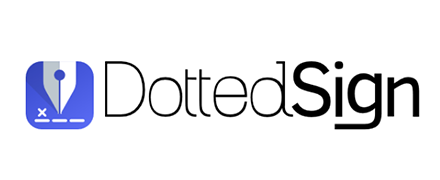What is a Wet Signature? Understanding the Importance and Transition to Electronic Signatures
In today’s digital age, the way we sign documents has evolved significantly. While the traditional method of signing documents with ink, known as a wet signature, has been widely accepted for centuries, e-signatures are gaining popularity as a more efficient and convenient alternative.
This article aims to provide a comprehensive understanding of wet signatures, highlight the differences between wet and e-signatures, explore how businesses can transition to electronic signatures, and examine the impact of each signature type on business processes.
What Are Wet Signatures?
A wet signature refers to the act of physically signing a paper document with ink, leaving a handwritten mark that represents the signer’s intent. This traditional method carries a sense of authenticity and is often required in various legal, business, and official situations.
Common examples include legal documents such as contracts, agreements, deeds, wills, and certain government forms. When you hear the term “wet sign,” it is simply a colloquial expression used to describe the act of physically signing a document with ink.
What’s the Difference Between a Wet Signature and an Electronic Signature?
Electronic signatures, on the other hand, encompass any electronic means or symbol used to sign a document or indicate the signer’s intent. They offer several advantages over wet signatures, including:
- Time and Efficiency: Wet signatures often require physical presence, printing, scanning, or mailing, resulting in time-consuming processes. In contrast, electronic signatures can be applied remotely, enabling faster and more efficient document signing.
- Practice: Wet signatures rely on handwritten marks, which can be cumbersome and may require physical storage space. Electronic signatures, however, offer diverse methods such as digital signatures, scanned signatures, or even typing one’s name, providing flexibility and ease of use.
- Legitimacy: Both wet and electronic signatures can be legally binding, although the legal recognition may vary based on jurisdiction and specific circumstances. It is crucial to understand the legal requirements and ensure compliance with applicable regulations.
- Different Signature Requirements: Certain documents may necessitate additional signatures, such as notarization or witness signatures, depending on their purpose and legal requirements. Understanding these distinctions is essential when choosing the appropriate signature method.
To learn more about the differences between wet signatures and electronic signatures in depth, don’t miss out on this article, Wet Signatures vs. Electronic Signatures — A Deep Dive
How Can Your Business Replace Wet Signatures?
To streamline business processes and transition from wet signatures to electronic signatures, consider the following approaches:
- Electronic Signature Platforms: Utilize dedicated electronic signature platforms or software, which provide secure and legally recognized methods for digitally signing documents. These platforms offer features that ensure the integrity and authenticity of signatures.
- Online Forms and Applications: Implement online forms and applications that support electronic signatures, eliminating the need for physical signatures altogether. This approach simplifies data collection and accelerates business remote working workflows.
- Digital Certificates and Encryption: Enhance the security and integrity of electronic signatures by employing digital certificates and encryption methods. These measures safeguard against tampering or unauthorized access, ensuring the authenticity of signed documents.
How Does Each Type of Signature Affect Business Processes?
Wet signatures, while traditionally accepted, can introduce delays in document processing, require physical storage space, and pose logistical challenges for remote signers or international transactions.
Conversely, electronic signatures offer numerous benefits such as faster turnaround times, improved efficiency, reduced paperwork, and the ability to conduct business transactions remotely. By transitioning to electronic signatures, businesses can streamline processes, enhance productivity, and reduce costs associated with printing, scanning, and mailing physical documents.
In today’s rapidly evolving business landscape, an increasing number of enterprises are transitioning from traditional wet signatures to the seamless convenience of electronic signatures. This strategic shift is driven by the desire for enhanced efficiency and productivity. By embracing e-signatures, businesses not only accelerate the pace of deal closures but also unlock promising opportunities in international markets.
How to Replace Wet Signatures?
To successfully replace wet signatures, follow these steps:
1. Identify Applicable Documents: Determine which documents in your business processes currently require wet signatures and evaluate their legal and regulatory requirements.
2. Choose an Electronic Signature Solution: Research and select a reliable electronic signature solution that aligns with your business’s needs, including security, compliance, user-friendliness, and integration capabilities.
3. Educate Stakeholders: Train employees and relevant stakeholders on how to effectively use the chosen electronic signature solution. Ensure their understanding of the legal validity of electronic signatures to build confidence in the transition.
4. Implement and Integrate: Seamlessly integrate the electronic signature solution into your existing workflows, document management systems, and other relevant software. This integration ensures a smooth transition and maximizes the benefits of electronic signatures.
5. Test and Monitor: Conduct thorough testing to ensure the electronic veterinary medicine signature solution functions correctly and consistently. Continuously monitor the implementation to address any issues promptly and improve the process further.
Transforming Signatures for a Digital Future
In conclusion, as we navigate the digital era, it’s important to understand the advantages of electronic signatures over traditional wet signatures. Electronic signatures, such as those offered by DottedSign, provide a more efficient and convenient way to sign documents, allowing businesses to streamline their processes and enhance productivity.
By utilizing electronic signature platforms like DottedSign, businesses can replace the time-consuming practices associated with wet signatures. DottedSign offers a secure and legally recognized solution for digitally signing documents, eliminating the need for physical presence, printing, scanning, or mailing. With features that ensure the integrity and authenticity of signatures, DottedSign simplifies the transition to electronic signatures, providing a seamless and user-friendly experience for both businesses and signers.
Make the switch from wet signatures to electronic signatures and unlock the full potential of your business by embracing the power of DottedSign. Learn more about our robust e-signature solution, and sign up for free to get started today.


